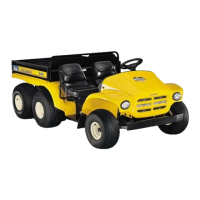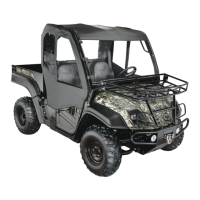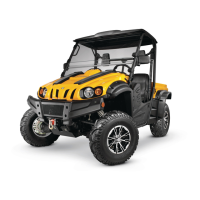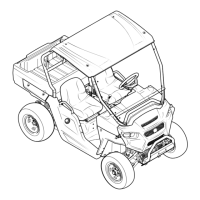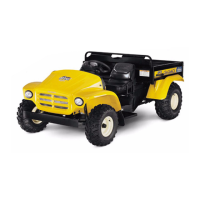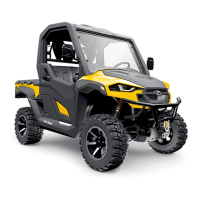Chapter 2- Drive System: CVT and Transfer Case
10
4c. The driving elements are tuned to get the
best vehicle performance out of each
model engine, taking into account: engine
power band and top speed, vehicle
weight, maximized vehicle pulling power,
maximized vehicle acceleration, and a 25
MPH (40 KPH) maximum speed.
5. Operation:
5a. At rest (engine OFF or at low idle) the
sheaves of the driving element (on the
engine crankshaft) are at the widest point
of their travel. The belt rests on a central
bearing surface, but no significant power
is transmitted to the driven element at idle
speed. See Figure 2.2.
5b. At about 1,400 RPM, the sheaves move
closer to each-other. As they do, they
touch the sides of the belt and begin to
transmit power. See Figure 2.3.
• The sheaves are moved by fly-weights within the
driving element housing. Centrifugal force
drives the fly-weights out. The fly-weights are
levered against the sheave, forcing it inward.
5c. As the engine RPMs increase, the
sheaves close further, forcing the belt out-
ward on the sheaves. See Figure 2.4.
Figure 2.2
Low idle speed
Driving element released
(spread)
Figure 2.3
Low RPM:
Driving element
beginning to engage belt
Belt deep in sheave
Figure 2.4
Moderate engine speed
Driving pulley partially closed-down
Belt partially shifted-out
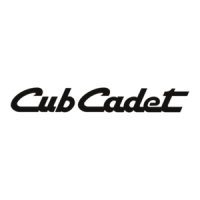
